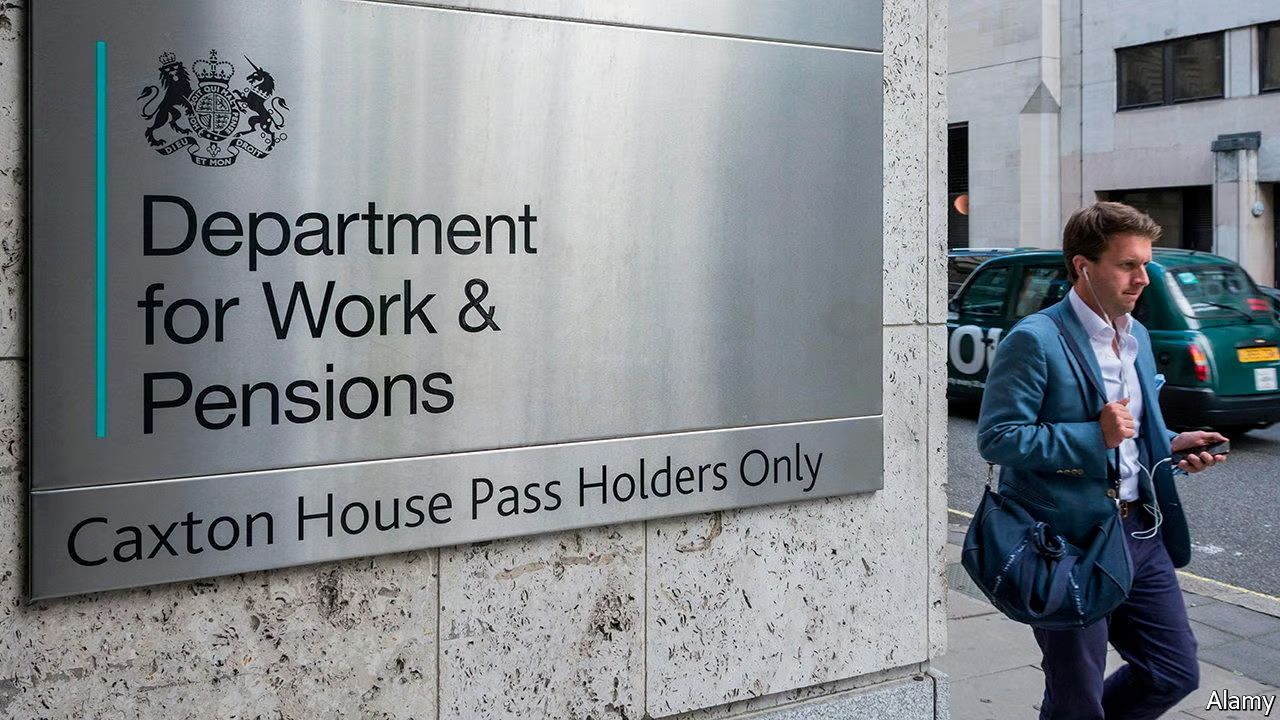

Finance
When Do Pension Funds Rebalance?
Published: January 23, 2024
Learn about the rebalancing process of pension funds and its impact on finance. Find out when pension funds typically rebalance their portfolios.
(Many of the links in this article redirect to a specific reviewed product. Your purchase of these products through affiliate links helps to generate commission for LiveWell, at no extra cost. Learn more)
Table of Contents
Introduction
Welcome to the world of pension funds, where the careful orchestration of investments plays a pivotal role in securing the financial future of retirees. In the realm of finance, the concept of rebalancing holds significant importance, especially for pension funds. This article aims to unravel the intricacies of pension fund rebalancing, shedding light on its significance, influencing factors, common strategies, and the challenges it presents.
Rebalancing is a fundamental practice that involves realigning the asset allocation of a portfolio to its original state or a desired mix. For pension funds, which are entrusted with the responsibility of safeguarding the retirement savings of countless individuals, the process of rebalancing carries profound implications. It serves as a mechanism to maintain the fund’s risk-return profile, ensuring that it remains aligned with the long-term financial objectives of the pensioners.
As we delve into the depths of pension fund rebalancing, we will explore the factors that influence the decision-making process, the common strategies employed, and the challenges that pension fund managers encounter. By understanding these elements, we can gain valuable insights into the intricate dance of risk and reward that shapes the financial landscape of pension funds.
Importance of Rebalancing for Pension Funds
Rebalancing stands as a cornerstone of prudent financial management for pension funds, holding immense significance in safeguarding the interests of retirees. The primary importance of rebalancing lies in its ability to maintain the desired risk-return profile of the pension fund. As market fluctuations and economic dynamics exert their influence, the asset allocation of the fund can drift from its intended mix, potentially exposing it to heightened risk or suboptimal returns. Through the process of rebalancing, pension fund managers can realign the portfolio to its target asset allocation, effectively mitigating these risks and preserving the fund’s long-term sustainability.
Furthermore, rebalancing facilitates the preservation of diversification benefits within the pension fund. Asset classes exhibit varying performance over time, causing deviations from the original allocation. By rebalancing, the fund can capitalize on the principle of “buy low, sell high,” systematically adjusting the allocation to capitalize on market inefficiencies and position the portfolio for future growth.
Another crucial aspect of rebalancing for pension funds is its role in aligning the investment strategy with the fund’s liabilities. Pension funds operate under the obligation to fulfill future pension payments to retirees. Through diligent rebalancing, fund managers can ensure that the asset allocation remains attuned to the fund’s liabilities, thus enhancing the fund’s ability to meet its long-term financial obligations.
Moreover, regular rebalancing instills discipline and a structured approach to investment management within pension funds. It prevents emotional decision-making driven by market euphoria or panic, fostering a systematic and rational method for adjusting the portfolio. This disciplined approach is essential in upholding the fiduciary responsibility of pension fund managers, as it demonstrates a commitment to prudent stewardship of the retirees’ savings.
Ultimately, the importance of rebalancing for pension funds transcends mere portfolio realignment; it embodies a proactive strategy to uphold the financial well-being of retirees, mitigate risk, and navigate the complexities of the ever-evolving financial landscape.
Factors Affecting Rebalancing Decisions
Rebalancing decisions for pension funds are influenced by a myriad of factors, each playing a crucial role in shaping the strategic realignment of the fund’s asset allocation. One of the primary determinants is the fund’s investment policy statement, which outlines the target asset allocation and the permissible deviation thresholds. This policy serves as a guiding framework, delineating the boundaries within which the fund’s asset mix can fluctuate before necessitating rebalancing.
Market conditions and economic outlook also exert a profound impact on rebalancing decisions. Shifts in market dynamics, such as fluctuations in interest rates, equity valuations, or macroeconomic indicators, can prompt the need for rebalancing to realign the portfolio in response to changing investment opportunities and risks. Additionally, changes in the correlation between asset classes, driven by economic events or market trends, can influence the optimal asset allocation, thereby necessitating rebalancing to maintain diversification benefits.
The risk tolerance and time horizon of the pension fund represent critical factors in rebalancing decisions. A fund with a longer time horizon may adopt a more aggressive rebalancing approach, capitalizing on market inefficiencies and long-term growth prospects. Conversely, a fund with a lower risk tolerance may prioritize a more conservative rebalancing strategy, aiming to minimize volatility and preserve capital, even at the expense of potential returns.
Regulatory requirements and accounting standards also shape the rebalancing decisions for pension funds. Compliance with regulatory guidelines and accounting principles necessitates adherence to specific asset allocation parameters and reporting standards, influencing the frequency and nature of rebalancing activities. Moreover, tax implications and transaction costs associated with rebalancing can impact the decision-making process, as fund managers seek to optimize the realignment while minimizing the associated expenses.
Furthermore, the fund’s cash flow needs and liquidity requirements play a pivotal role in rebalancing decisions. Anticipated pension payouts, contributions, or redemptions necessitate a careful assessment of the fund’s liquidity position, guiding the timing and magnitude of rebalancing activities to ensure the availability of sufficient liquid assets to meet ongoing obligations.
In essence, the interplay of investment policy, market conditions, risk considerations, regulatory requirements, and liquidity needs collectively influences the rebalancing decisions for pension funds, underscoring the intricate and multifaceted nature of strategic asset realignment within the realm of institutional investment management.
Common Rebalancing Strategies
Rebalancing strategies for pension funds encompass a diverse array of approaches tailored to realign the fund’s asset allocation while navigating market dynamics and risk considerations. One prevalent method is the calendar-based rebalancing, which involves periodic realignment of the portfolio at predefined intervals, such as quarterly or annually. This systematic approach provides a structured framework for rebalancing, ensuring consistent monitoring and adjustment of the asset mix.
Another widely employed strategy is the threshold-based rebalancing, wherein the asset allocation is adjusted when the actual allocation deviates from the target allocation by a predetermined threshold. This approach allows for flexibility, as it avoids unnecessary trading due to minor fluctuations while addressing significant deviations that could impact the fund’s risk profile.
Moreover, cash flow-driven rebalancing strategies take into account the fund’s liquidity needs and cash flow requirements. In this approach, rebalancing decisions are influenced by the timing and magnitude of anticipated cash flows, such as pension payments and contributions, ensuring that the fund maintains adequate liquidity while adjusting the asset allocation.
Tactical rebalancing strategies entail dynamic adjustments to the asset allocation based on short-term market outlook and valuation metrics. Fund managers employing this approach may capitalize on market inefficiencies or capitalize on perceived opportunities, deviating from the strategic asset allocation in response to prevailing market conditions.
Furthermore, a risk-based rebalancing approach focuses on maintaining the fund’s risk exposure within predefined parameters. This strategy involves rebalancing the portfolio to uphold the desired risk-return profile, especially in response to changes in market volatility, correlation between asset classes, or macroeconomic indicators.
Additionally, some pension funds adopt a combination of these strategies, integrating calendar-based rebalancing with threshold-based triggers or incorporating tactical adjustments within a long-term strategic asset allocation framework. This blended approach aims to harness the benefits of different strategies while mitigating their individual limitations, providing a nuanced and adaptive rebalancing methodology.
Ultimately, the choice of rebalancing strategy for pension funds hinges on a careful evaluation of the fund’s investment objectives, risk tolerance, liquidity needs, and market dynamics. By navigating these considerations, pension fund managers can craft a tailored rebalancing strategy that aligns with the fund’s long-term financial goals while effectively managing risks and opportunities within the investment portfolio.
Challenges in Rebalancing Pension Funds
Rebalancing pension funds, while indispensable for maintaining the fund’s risk-return profile and aligning with long-term objectives, presents a myriad of challenges that demand astute navigation and strategic acumen. One of the primary challenges lies in the dynamic nature of financial markets, where rapid fluctuations and evolving economic conditions can complicate the timely and precise execution of rebalancing activities. Market volatility, coupled with liquidity constraints, can hinder the seamless realignment of the portfolio, potentially exposing the fund to unintended risks.
Moreover, transaction costs and tax implications pose significant challenges in rebalancing pension funds. The process of buying and selling assets to realign the portfolio incurs transaction expenses, which can erode the fund’s returns and liquidity. Additionally, tax considerations, such as capital gains taxes, must be carefully evaluated to minimize the impact of rebalancing activities on the fund’s tax liabilities, adding complexity to the decision-making process.
Another notable challenge arises from the need to balance the trade-offs between rebalancing and staying invested. In certain market conditions, rebalancing may entail selling assets that have exhibited strong performance, potentially limiting the fund’s participation in further upside potential. Conversely, delaying or forgoing rebalancing to capitalize on market momentum introduces the risk of prolonged exposure to overvalued assets, potentially amplifying downside risk in the event of market corrections.
Furthermore, the regulatory and compliance landscape presents challenges in rebalancing pension funds. Adherence to regulatory guidelines, reporting standards, and fiduciary responsibilities necessitates a meticulous approach to rebalancing, ensuring that the realignment activities align with the fund’s legal and ethical obligations. The evolving regulatory environment adds another layer of complexity, requiring ongoing vigilance and adaptability in rebalancing practices.
Additionally, behavioral biases and cognitive pitfalls can impede effective rebalancing decisions. Emotional reactions to market fluctuations, anchoring on past performance, or herd mentality can influence the timing and magnitude of rebalancing activities, potentially deviating from the fund’s strategic objectives. Overcoming these behavioral challenges demands discipline, rational decision-making, and a steadfast commitment to the fund’s long-term investment strategy.
In essence, the challenges in rebalancing pension funds underscore the intricate interplay of market dynamics, transaction considerations, regulatory requirements, behavioral influences, and strategic trade-offs. Navigating these challenges demands a holistic and adaptive approach, empowering pension fund managers to uphold the fund’s financial resilience and pursue the long-term prosperity of retirees amidst a dynamic and complex investment landscape.
Conclusion
As we conclude our exploration of pension fund rebalancing, it becomes evident that this practice is not merely a mechanical realignment of assets, but a strategic imperative that underpins the financial security of retirees. The importance of rebalancing for pension funds lies in its capacity to maintain the desired risk-return profile, preserve diversification benefits, and align the investment strategy with the fund’s liabilities. Through disciplined rebalancing, pension funds can navigate market fluctuations, mitigate risk, and uphold their fiduciary responsibility to safeguard the retirement savings of countless individuals.
Factors influencing rebalancing decisions, ranging from investment policy statements to market conditions and regulatory requirements, underscore the multifaceted nature of strategic asset realignment within the realm of pension fund management. The choice of rebalancing strategies, be it calendar-based, threshold-based, or a blend of approaches, reflects the nuanced balancing act between risk management, liquidity needs, and long-term investment objectives.
However, the challenges in rebalancing pension funds, encompassing market volatility, transaction costs, behavioral biases, and regulatory complexities, demand astute navigation and unwavering commitment to prudent stewardship. Overcoming these challenges necessitates a holistic and adaptive approach, empowering pension fund managers to uphold the fund’s financial resilience and pursue the long-term prosperity of retirees amidst a dynamic and complex investment landscape.
In essence, pension fund rebalancing embodies the harmonious orchestration of financial acumen, market insights, and unwavering dedication to the well-being of retirees. As the financial landscape continues to evolve, the art of rebalancing stands as a beacon of stability, guiding pension funds toward a sustainable and prosperous future for generations to come.














